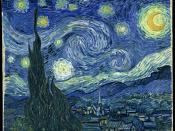Abnormal Psychology
Bipolar Disorder-Facts and Studies
Bipolar disorder, also known as manic-depressive illness, is a brain disorder that causes unusual shifts in a person mood, energy, and ability to function. Different from the normal ups and downs that everyone goes through, the symptoms of bipolar disorder are severe. They can result in damaged relationships, poor job or school performance, and even suicide. However it can be treated, and people with this illness can lead productive lives.
More than 2 million American adult, about 1 percent of the population age 18 and older in any given year have bipolar disorder (Regier DA, Narrow WE, Rae DS). This illness typically develops in late adolescence or early adulthood. However, some people have their first symptoms during childhood, and some develop them late in life. It is often not recognized as an illness, and people may suffer for years before it is properly diagnosed and treated.
Like diabetes or heart disease, bipolar disorder is a long-term illness that must be carefully managed throughout a person's life.
Manic-depression distorts moods and thoughts, incites dreadful behaviors, destroys the basis of rational thought, and too often erodes the desire and will to live. It is an illness that is biological in its origins, yet one that feels psychological in the experience of it; an illness that is unique in conferring advantage and pleasure, yet one that brings in its wake almost unendurable suffering and, not infrequently, suicide.
Bipolar disorder causes dramatic mood swings from overly high or irritable to sad and hopeless, and then back again, often with periods of normal mood in between. Severe changes in energy and behavior go along with these changes in mood. The periods of highs and lows are called episodes of mania and depression. A manic or depressive episode...


